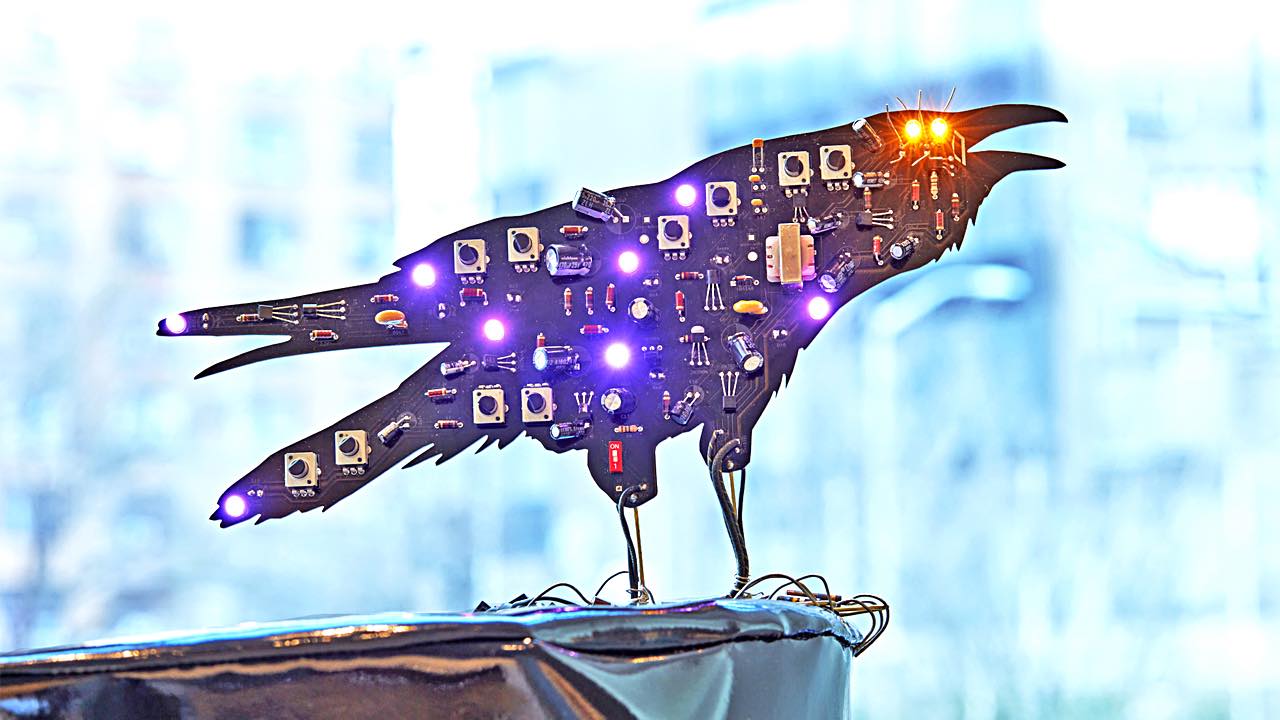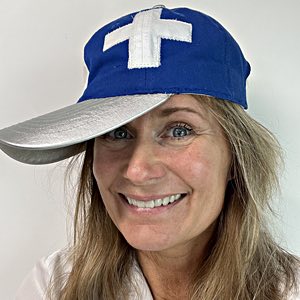Hacking Nature's Musicians
"Hacking Nature Musicians" is an ecosystem of sound-generating electronic devices made with discrete hardware (no digital code or recordings). My circuits generate sound such as birdsong and insect chirping. I also refer to this practice as "electronic naturalism" because my art reveals the life-like qualities of analog electronic devices.
 My primary reason for building sound-generating circuits is to explore the life-like qualities of analog circuitry. As electricity flows through discrete hardware, such as astable multivibrator oscillators, it is shaped into waveforms that we can hear. The vibrating electricity is akin to synapses in a bird's brain that trigger patterns of vocalization we call "song." I use my animal circuits as inhabitants of my sculptural installations, such as "Circuit Garden," which is on view in NYC through June 4th at 450 West 33rd Street.
My primary reason for building sound-generating circuits is to explore the life-like qualities of analog circuitry. As electricity flows through discrete hardware, such as astable multivibrator oscillators, it is shaped into waveforms that we can hear. The vibrating electricity is akin to synapses in a bird's brain that trigger patterns of vocalization we call "song." I use my animal circuits as inhabitants of my sculptural installations, such as "Circuit Garden," which is on view in NYC through June 4th at 450 West 33rd Street.
Side story I explore electricity in nature through artworks that sound like crickets, katydids, frogs, birds, and other non-human musicians. I don't use code or recordings, but old-school hardware and a DC power supply. I have explored circuits that portray various birds and insects, and I have built sequencers to randomize a natural chorus (i.e., like an ecosystem). On my Hackaday.io project site, I provide instructions for how to build your own piezo electric speaker in order to shape sound electrically and mechanically. I also share many of my techniques to create circuits inspired by the spark of life.
Technically speaking, my electronics can be thought of as primitive-interface audio synthesizers for natural soundscapes. I'm currently focused on mimicking the nocturnal insects and birds of my rural landscape in Virginia, but I would enjoy the opportunity to study nature's circuits elsewhere in the world.
Collection of related videos:
https://vimeo.com/showcase/5788666
Hackaday project (no longer active):
https://hackaday.io/project/161443-hacking-natures-musicians
Talk for the Hackaday.io community in 2019:
https://www.youtube.com/watch?v=stIh4WLNnc8
Technically speaking, my electronics can be thought of as primitive-interface audio synthesizers for natural soundscapes. I'm currently focused on mimicking the nocturnal insects and birds of my rural landscape in Virginia, but I would enjoy the opportunity to study nature's circuits elsewhere in the world.
Collection of related videos:
https://vimeo.com/showcase/5788666
Hackaday project (no longer active):
https://hackaday.io/project/161443-hacking-natures-musicians
Talk for the Hackaday.io community in 2019:
https://www.youtube.com/watch?v=stIh4WLNnc8
Frequently Asked Questions
What inspired you to do this?
Hacking Nature's Musicians arose from my search for the spark of life in biological and machine intelligence. I am fascinated by electricity as a creative medium, and it turns out that sound is one of (if not the) best way to experience it.
How long did it take to make it?
I have been building artistic electronics for more than two decades. In 2004, I embarked on the journey to teach myself analog electrical engineering and it's hard to say when sound became a predominant expression of my circuits -- definitely by 2012 when I exhibited my body of work, The Parallel Series. It was not until 2018 that I began to focus on birdsong and by that point, analog electronic sound had become a focus.
How long have you been doing things like this?
More than two decades, with a steady improvement in technique and understanding.
How much did this cost to do?
Wow. The process of exploration cost me a lot in terms of time, money, and overall sacrifice. Experimental art is not for the faint of heart.
Have you done other things like this?
Yes. Hacking Nature's Musicians relates to my entire practice of artistic analog electrical engineering.
What did you wish you knew before you started this?
I wish I knew electronics terminology, how to read schematics, and how to speak "electrical engineering." The majority of my practice has been cross-disciplinary learning and communication.
Are there plans available to make this? Do you sell this?
I am working on commercially available versions of my bird circuits, and I would like to make insect and amphibian modules, too. If anyone has ideas for how my work can benefit the electronic music community (and generate income to support my practice) that would be awesome!
What’s next?
I will continue to make natural electronic ecosystems with light, sound, and possibly movement. I am open to collaboration. I am also working on sculpture and fashion inspired by analog electronic devices because I love how they look. I am also fascinated by the parallels between spirituality and electrical engineering.
Resoures?
I recommend that beginners look at the schematics and writings of Forest Mimms. His Radioshack pamphlets were critical for my learning process. I have also enjoyed being a member of the Hackaday.io community. Follow me on social media for progress, exhibitions, product announcements, etc. And get in touch!
Kelly Heaton
: Artist

I'm a visual artist who is fascinated by energy, frequency, and vibration. Fore more than two decades, I have hacked circuits and built my own analog electronic devices to explore the spark of life in both biological organisms and machines. My circuits sing like birds, amphibians, and insects. My musicians friends have expressed an interest to play my circuits like musical instruments or synth modules, and so I am joining the Music Maker community to explore cross-disciplinary collaborations.
Connect with Kelly Heaton
How I can help you:
I have a lot of experience with artistic analog electronic sound circuits. Documentation of my work, discovery process, and schematics can be found on my website, Vimeo, and Hackaday.io. I hope to inspire others to use analog electronics in their own creative practice. Electricity is the most important medium of our time, and it is important that makers can learn how to build their own analog circuits from scratch. Analog isn't just a retro fad: it's the physical foundation of all electronic devices. I want to develop commercially available versions of my circuits so that musicians can add cool bird and insects sounds to their mix.
I have a lot of experience with artistic analog electronic sound circuits. Documentation of my work, discovery process, and schematics can be found on my website, Vimeo, and Hackaday.io. I hope to inspire others to use analog electronics in their own creative practice. Electricity is the most important medium of our time, and it is important that makers can learn how to build their own analog circuits from scratch. Analog isn't just a retro fad: it's the physical foundation of all electronic devices. I want to develop commercially available versions of my circuits so that musicians can add cool bird and insects sounds to their mix.
How you can help me:
I would like to adapt my designs for use by the musical community as instruments and/or synthesizer modules (i.e., for eurorack systems). It would be fantastic if musicians and sound artists would provide me with advice on features, user interface considerations, and marketplaces. Because I am not a musician, sound artist (per se), or digital engineer, I am not 100% sure how to interface my work with these worlds.
I would like to adapt my designs for use by the musical community as instruments and/or synthesizer modules (i.e., for eurorack systems). It would be fantastic if musicians and sound artists would provide me with advice on features, user interface considerations, and marketplaces. Because I am not a musician, sound artist (per se), or digital engineer, I am not 100% sure how to interface my work with these worlds.
If you like this project, please make a small donation to the artist.